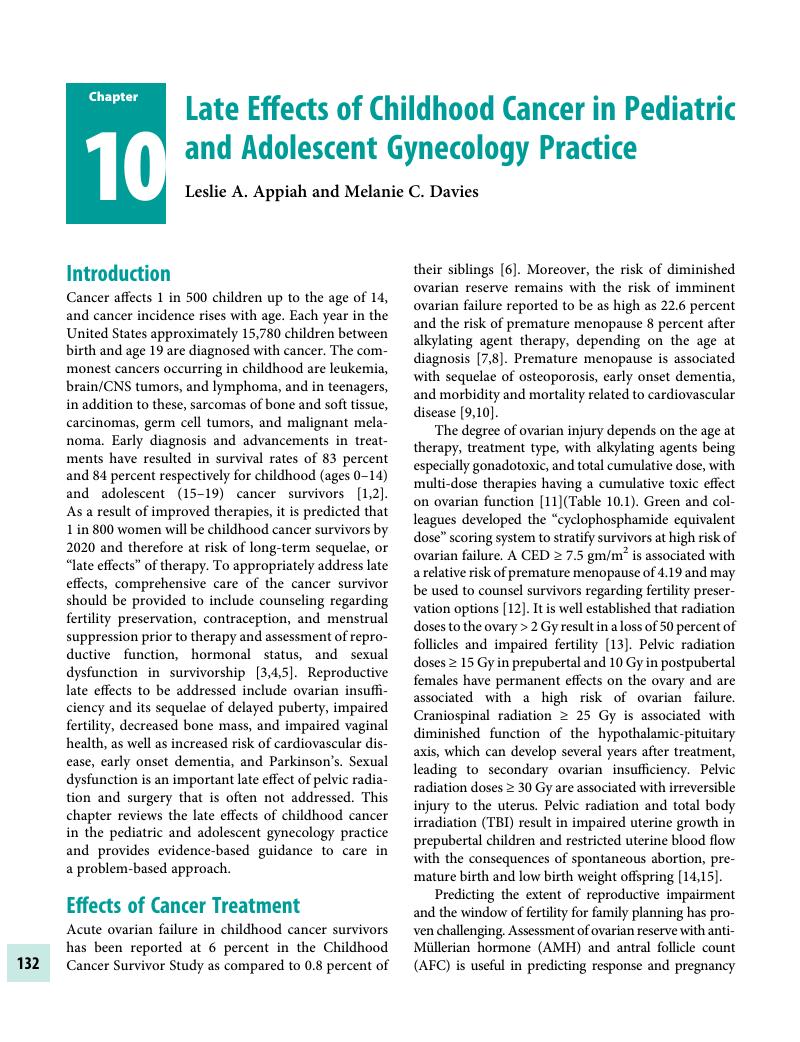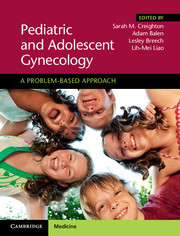Book contents
- Pediatric and Adolescent Gynecology
- Pediatric and Adolescent Gynecology
- Copyright page
- Contents
- Contributors
- Chapter 1 An Introduction to Pediatric and Adolescent Gynecology Practice
- Chapter 2 Embryology and Normal Development of Female Reproductive Function in Pediatric and Adolescent Gynecological Practice
- Chapter 3A Holistic Assessment in Pediatric and Adolescent Gynecology Practice
- Chapter 3B Holistic Assessment in Pediatric and Adolescent Gynecology Practice
- Chapter 4 Safeguarding for Pediatric and Adolescent Gynecology
- Chapter 5 Informed Consent in Pediatric and Adolescent Gynecology Practice: From Ethical Principles to Ethical Behaviors
- Chapter 6 Common Gynecological Symptoms before Puberty in Pediatric and Adolescent Gynecological Practice
- Chapter 7A Menstrual Dysfunction in Pediatric and Adolescent Gynecology Practice
- Chapter 7B Menstrual Dysfunction in Pediatric and Adolescent Gynecology Practice
- Chapter 8A Primary Amenorrhea in Pediatric and Adolescent Gynecology Practice
- Chapter 8B Primary Amenorrhea in Pediatric and Adolescent Gynecology Practice
- Chapter 8C Primary Amenorrhea in Pediatric and Adolescent Gynecology practice
- Chapter 8D Primary Amenorrhea in Pediatric and Adolescent Gynecology Practice
- Chapter 9A Urinary Problems in Pediatric and Adolescent Gynecology Practice
- Chapter 9B Urinary Problems in Pediatric and Adolescent Gynecology Practice
- Chapter 10 Late Effects of Childhood Cancer in Pediatric and Adolescent Gynecology Practice
- Chapter 11 Laparoscopic Surgery in Pediatric and Adolescent Gynecology Practice
- Chapter 12 Psychological Care in Pediatric and Adolescent Gynecology Practice: Addressing the Effects of Sexual and Gender Norms
- Index
- References
Chapter 10 - Late Effects of Childhood Cancer in Pediatric and Adolescent Gynecology Practice
Published online by Cambridge University Press: 01 February 2018
- Pediatric and Adolescent Gynecology
- Pediatric and Adolescent Gynecology
- Copyright page
- Contents
- Contributors
- Chapter 1 An Introduction to Pediatric and Adolescent Gynecology Practice
- Chapter 2 Embryology and Normal Development of Female Reproductive Function in Pediatric and Adolescent Gynecological Practice
- Chapter 3A Holistic Assessment in Pediatric and Adolescent Gynecology Practice
- Chapter 3B Holistic Assessment in Pediatric and Adolescent Gynecology Practice
- Chapter 4 Safeguarding for Pediatric and Adolescent Gynecology
- Chapter 5 Informed Consent in Pediatric and Adolescent Gynecology Practice: From Ethical Principles to Ethical Behaviors
- Chapter 6 Common Gynecological Symptoms before Puberty in Pediatric and Adolescent Gynecological Practice
- Chapter 7A Menstrual Dysfunction in Pediatric and Adolescent Gynecology Practice
- Chapter 7B Menstrual Dysfunction in Pediatric and Adolescent Gynecology Practice
- Chapter 8A Primary Amenorrhea in Pediatric and Adolescent Gynecology Practice
- Chapter 8B Primary Amenorrhea in Pediatric and Adolescent Gynecology Practice
- Chapter 8C Primary Amenorrhea in Pediatric and Adolescent Gynecology practice
- Chapter 8D Primary Amenorrhea in Pediatric and Adolescent Gynecology Practice
- Chapter 9A Urinary Problems in Pediatric and Adolescent Gynecology Practice
- Chapter 9B Urinary Problems in Pediatric and Adolescent Gynecology Practice
- Chapter 10 Late Effects of Childhood Cancer in Pediatric and Adolescent Gynecology Practice
- Chapter 11 Laparoscopic Surgery in Pediatric and Adolescent Gynecology Practice
- Chapter 12 Psychological Care in Pediatric and Adolescent Gynecology Practice: Addressing the Effects of Sexual and Gender Norms
- Index
- References
Summary

- Type
- Chapter
- Information
- Pediatric and Adolescent GynecologyA Problem-Based Approach, pp. 132 - 140Publisher: Cambridge University PressPrint publication year: 2018

